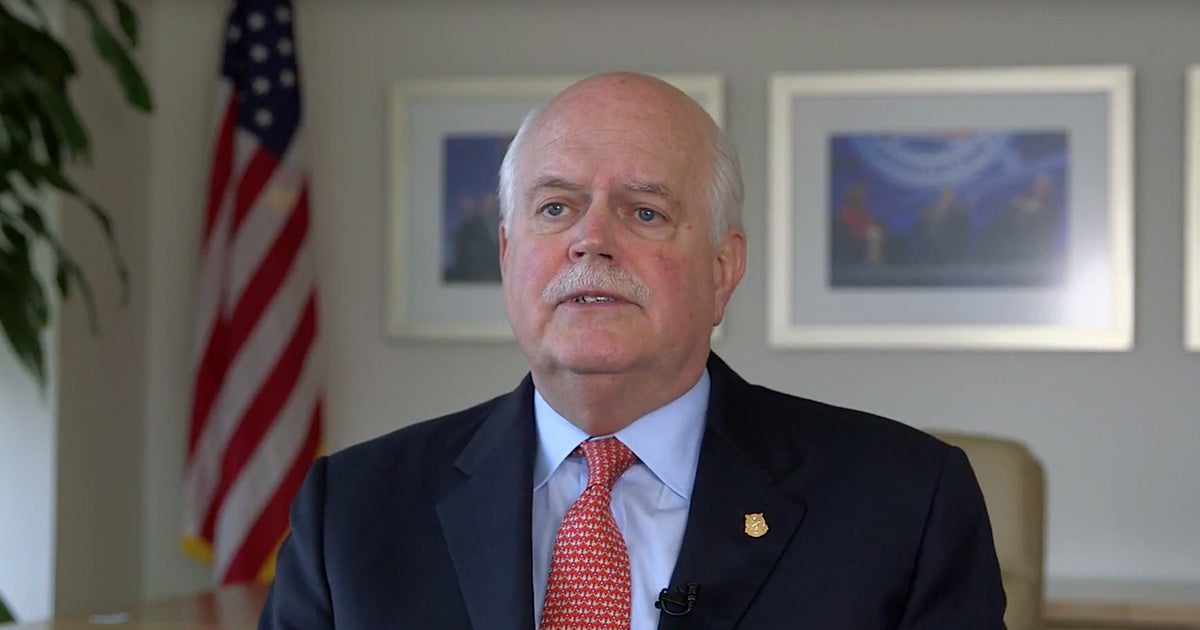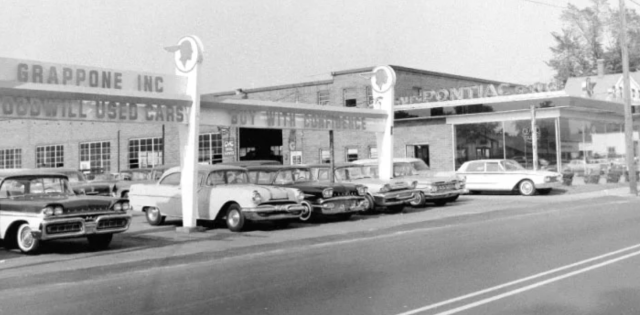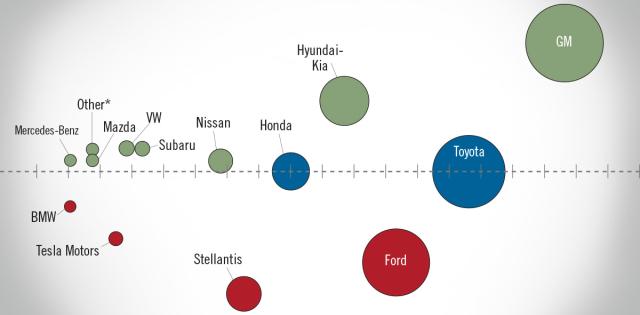As we wind-down another good year of new-vehicle sales and get ready for what could be tougher sledding, I have a request for some of our OEM business partners: Do the right thing by your dealers—it’s also smart business.
Address Unfair Stair-Step Programs
The ongoing proliferation of unfair stair-step incentive programs—especially overly complicated and short-term programs that favor larger and urban dealers—continues to erode brand loyalty, brand value, residual values and the consumer experience. On paper, these programs are designed to stimulate targeted sales by lowering prices on specific vehicles. While these ever-complex programs may temporarily boost sales, they’re a showroom disaster for consumers. By cutting prices for some customers, but not all customers, these programs result in huge price discrepancies for all consumers.
Consumers see these discrepancies for the same vehicles across different dealers, or at the same dealer at different points in time. They often see discounts applied to vehicles they don’t want but that can’t be applied to vehicles they do want. Worse, unfair stair-step programs aren’t transparent because, being manufacturer-to-dealer incentives, consumers simply don’t see them, don’t understand them, and view the results as stereotypical old-school shenanigans.
These ill-advised programs with a lack of consistency, lack of transparency and lack of explanation usually lead to a lack of consumer trust—not only for an individual dealer, but also for every dealer who carries that brand. And when you have created a lack of trust in every dealer of a given brand, you have instilled a lack of trust in the brand itself. Once brand trust erodes, erosion of brand loyalty inevitably follows.
Last year, NADA commissioned an independent examination of what the use of unfair stair-step incentive programs accomplishes—both good and bad—in the marketplace. The research concluded that these programs have severe unintended consequences for consumers, which lead to severe unintended consequences for manufacturers.
Among other things, the report found that: “Stair-step programs can increase sales volume in the short run while simultaneously decreasing demand. However, an increase in sales due to an aggressive stair-step program should not be confused with an increase in either consumer demand or the value of the manufacturer’s brand. In fact, manufacturers who use stair-step programs aggressively risk damaging their brand in the long run and entering a death spiral of declining demand that eventually no amount of discounting can profitably overcome.” There are better ways to structure incentives and increase sales.
According to the latest Cox Automotive Car Buyer Journey Study, brand loyalty across all manufacturers is down to 56 percent. This should be alarming. With more than half of new-car buyers ready to jump to another ship, the last thing OEMs should be doing is deploying marketing strategies that essentially give those car buyers an extra push out the door.
At the same time, Cox found that car buyers who identified their dealer as promoting transparent pricing reported significantly higher dealer satisfaction scores—71 percent versus 53 percent—than those who said their dealership was not promoting transparent pricing. What successful dealers have learned during the past decade is that it’s a lot easier to sell or lease another vehicle to the same happy customer than to convert a new customer.
Measure Sales Performance and Effectiveness Fairly and Accurately
OEMs have a right to require and enforce dealer compliance with reasonable and attainable sales performance standards, but those standards must measure sales effectiveness fairly and accurately. Digital commerce has reduced the relevance of geographic sales territories. Yet many OEMs still rate their dealers’ effectiveness primarily on performance in an assigned market area and don’t control for numerous variables such as unique locations, size and shapes of the areas of responsibility, the layout of roads and thoroughfares, demographics, geography, local brand preferences, etc.—factors that make the statistical analyses currently in vogue unfair and unreliable.
OEMs using these outdated and ineffective standards should adopt new methodologies that encourage compliance with reasonable standards by 100 percent of their dealers, rather than standards that use “zero-sum metrics” that make it a certainty that “lower-performing” dealers don’t get to participate in certain incentive programs or, worse yet, get a termination notice. OEMs have lost recent cases in New York, California and Texas challenging unfair methodologies. But instead of adopting new standards that are fair, OEMs that have lost these cases are filing appeals.
Compensate Dealers Fairly for Warranty and Recall Repairs
Rather than stand behind their products, many OEMs continue to fight with their dealers over the reasonableness of compensation for fixing the OEMs’ product defects and mistakes. But dealers are part of the solution to the recall and warranty challenges, not part of the problem.
Last year, NADA members performed more than 50 million warranty and recall repair orders. Indeed, most dealers are running their service bays at nearly full capacity with multiple work shifts and flexible hours to accommodate their customers. Yet even with those staggering numbers, there are still millions of vehicles on the road with outstanding recalls.
OEMs should properly prioritize and incentivize warranty and recall repairs by paying their dealers the same parts and labor rates dealers regionally charge their customers when performing non-warranty or non-recall repair orders. OEMs also need to do a better job of getting timely recall parts into the hands of their dealers to perform recall repairs. Nothing destroys brand loyalty more quickly than a defective product that takes forever to get fixed.
Treat Small-Volume Dealers as a Valuable Resource
Thirty-four percent of NADA members sell 300 or fewer new vehicles per year. Smaller-volume dealers typically operate in rural areas, so they provide a vital link for consumers seeking a choice of new vehicles, as well as convenient access to factory-trained technicians for service, warranty and recall repairs. Some OEMs seem to have forgotten that volume is built one sale at a time and that maintaining a national presence in all markets is key to universal brand recognition.
Small-volume dealers don’t need to be saddled with the same facility and “program” requirements as high-volume dealers. And these dealers cost OEMs next to nothing to maintain but serve as goodwill ambassadors for millions of loyal customers. Rather than finding ways to make life harder for smaller-volume dealers, OEMs should fully embrace them for what they are—a competitive asset—and create a scalable business environment so these dealers can thrive.










